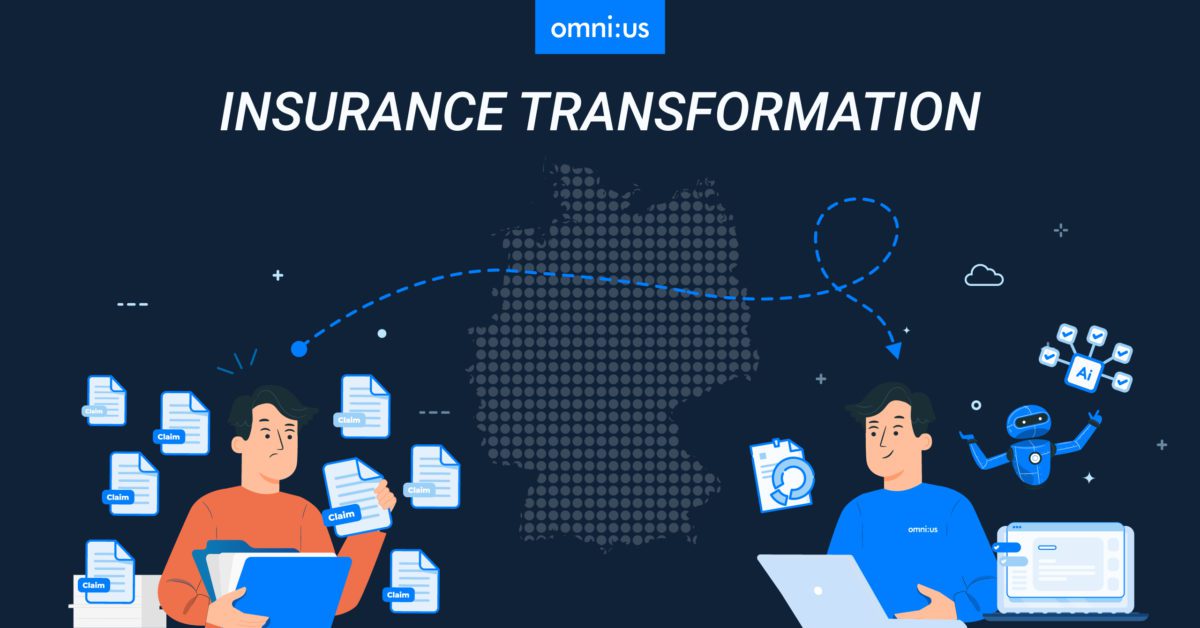“They are slowly dying out.” No, you don’t have to put it quite that drastically, but the experts at insurance companies who are also familiar with old conditions are slowly retiring. This means that a lot of experience and intellectual knowledge is being lost. It is the grey-haired clerks who still know and apply old coverage conditions in household insurance and beyond.
The documentation of the practical settlement of claims with these old sets of conditions has not been done comprehensively everywhere. The consequence is a considerable additional effort in the settlement of claims for the younger claims adjusters as well as errors in the settlement. A technically supported solution to this challenge is very often not available or only in rudimentary form. I will come back to this later in this article.
Replacement of the previous administration systems
In recent decades, the replacement or further development of insurers’ administrative systems has repeatedly been subordinated to other priorities. Examples include the millennium changeover in the run-up to 2000 and the currency changeover from the German mark to the euro in 2002. As a result, many insurers’ administrative systems are still technically based on developments from the 1980s. Although fancy input masks have been developed for the users and placed in front of the previous input screens that look more like DOS programming, this technical backwardness prevents the simple and direct connection to the new technical world of the web and cloud. In quite a few examples, it is the case that a seemingly directly connected front end with many functions is provided for customers, but in practice the customer entries are printed out, placed on the – perhaps electronic – desk of the clerk, so that the clerk enters the data manually into the administration system.
In modernised variants, this is done by an employee in a country with a lower wage structure or by a robot (RPA). The problem of the lack of interfaces remains the same but causes lower costs. This is not a sustainable solution. Currently, many insurers are in the process of replacing legacy systems with solutions from e.g., Guidewire, SAP, Sapiens, Duck Creek or Keylane. The biggest challenge in replacing outdated administration systems lies in the migration of the insurance portfolio. It is very complex and consumes a lot of development time. The banking industry, which is otherwise viewed with such suspicion, is already much further along in the challenges described, which essentially consist of the replacement of old administration systems and a lack of connectivity. The result is media disruptions, which are primarily solved with personnel deployment. Experts speak of a development gap of five to ten years between insurers and the banking industry.

Demand on the customer experience (customer journey)
Furthermore, the buying behaviour and service demands of the younger customer transparency and speed. Today, it is possible to order a refrigerator at any time of the day or night via a mail-order company. But that’s not all. The customer receives an order confirmation immediately, a shipping confirmation promptly and can check the shipping status online every minute. If he orders by express, he will have the good item at home within 48 hours, if this was his desired date. It is worthwhile for insurers to look beyond industry boundaries. The customer has the same expectations for his interaction with the insurer. For him, it looks like a promise of cover, which is usually standardised, is printed on a piece of paper and this is sent to him by post. No warehousing – except for the paper, of course – is required, it is simply sent by post and the customer does not have to be at home to receive the goods – in this case the insurance policy. Why should it take longer than 48 hours?
There is also a very high expectation of transparency with regard to the processing status of his request – be it for the conclusion of an insurance policy, a change of contract or a claim. After all, they can check the processing status of mail-order companies and parcel service providers online at any time. The expectations described above should be the defining element of a customer-focused customer journey. Many industries rely on artificial intelligence and the use of big data to fulfil these customer wishes for individualisation and increased processing speed. Why isn’t the insurance industry doing more of the same?
How can insurers meet these challenges? As already mentioned, the question is answered with the introduction of new administrative systems. From our point of view, this is an important step in the right direction. But it is not the solution to all the challenges described. The fact remains that increasingly the technical expertise for the application of old sets of conditions is being lost due to the retirement of the grey-haired experts. Even modern systems do not know how to apply the household contents conditions from 1974 (VHB74) in the event of a claim. Robots can certainly take over repetitive, identical tasks if they are told to do so. This saves precious resources in the form of qualified employees. But who tells the robots what to do in the new administration systems?
Solution through the use of artificial intelligence (AI)
The key is the application of artificial intelligence (AI). Artificial intelligence platforms behave like an intelligent clerk. They continuously receive and process new information and apply it. With each processed (claim) case, these platforms learn. They also learn from mistakes. Just like a human being (should do). In addition, it is possible to also train old sets of conditions and work instructions. An AI platform does not forget anything that it should not forget.
The basis for the successful integration of an AI platform lies in two components: 1. reading relevant information from available documents and extracting usable data from it, and 2. applying terms and conditions and work instructions to this data. The clever use of artificial intelligence relieves the clerks at the insurers of time-consuming tasks but does not incapacitate them. The effect is exclusively positive: processing times are shortened, employee satisfaction increases, the insurer’s cost structure is relieved, and, above all, the customer appreciates the fast and correct processing of his request, for example his claim.
An AI platform works around the clock every day and it does not retire either.
Many insurers have already started to look at ideas for the use of artificial intelligence. As it is a complex topic, it has not been the focus of business process development until now. In the meantime, however, AI has moved from buzz word to market maturity. With this technology, the tension between employee satisfaction, cost efficiency, customer satisfaction and process speed is being resolved.
In your company too?
Reach out: [email protected]


